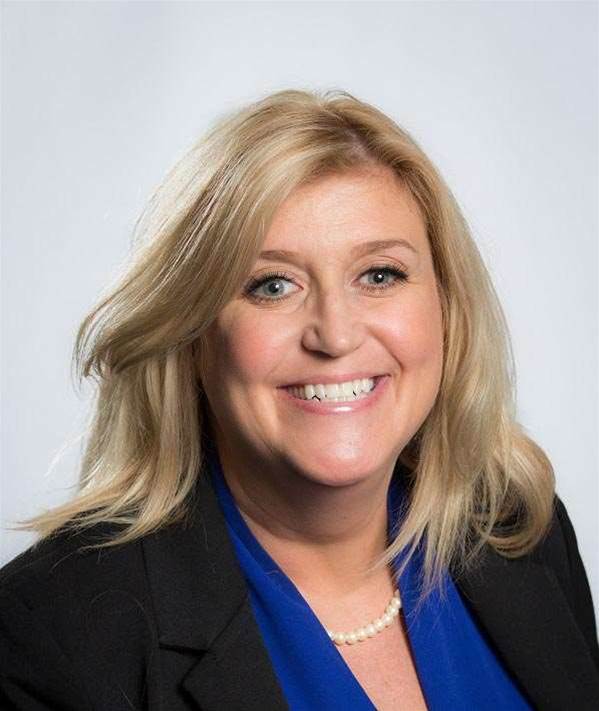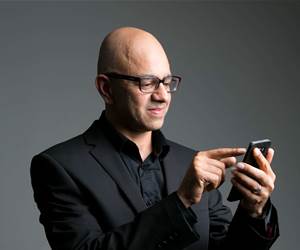Tech SWAT teams kicking down the digital door
Karen Wagner - Cardno

From dam engineers in Ecuador to Sydney light-rail gurus, Cardno's global CIO Karen Wagner is linking up her widespread organisation.
It’s not usually the first descriptor attached to an IT career, but Wagner insists she became a CIO for the creativity.
The global IT lead for engineering firm Cardno - which has its headquarters in Brisbane’s Fortitude Valley but works across Australia, the Americas and the developing world - says it's what attracted her to a degree in computer science in the first place.
“I find technology to be extremely creative,” the New Yorker exclaims.
“It is about that initial idea generation and really bringing great minds together to go through that creative process.
“I love talking to our clients and business constituents and identifying the challenges and the opportunities, and really brainstorming all the different approaches we could take."
Cardno is certainly an enterprise that could use some creativity right now.
In the past 12 months the business has been hit on a number of fronts by economic shifts in its many locations. Closest to home, it has seen a lot of its Australian and NZ revenue dry to a trickle as dropping oil and iron ore prices force resources clients to curb the scale of their operations.
Roughly 30 percent of Cardno’s revenue comes out of this region, and the resource industry accounts for 16 percent of that slice.
In the Americas, which makes up around 60 percent of global fee revenue, government spending on the kinds of infrastructure projects Cardno specialises in has dropped.
At the same time, work has slowed down on the cleanup of the Gulf of Mexico following BP’s Deepwater Horizon oil rig explosion in April 2011 - one of Cardno’s largest projects.
Its most recent half year results revealed profits were down 27 percent year-on-year. They aren’t expected to pick back up until 2016 at the earliest, when a $10 million a year savings drive starts to deliver returns.
Right now the company can't afford to ignore innovation.
The best manifestation of Wagner’s particular brand of tech creativity could be the four to five ‘SWAT teams’ working on forward-thinking experiments that could become Cardno’s next competitive differentiator.
Wagner describes these scrum-like groupings as “stealth teams” pulled together from a mix of IT workers and subject matter experts from elsewhere in the business, roughly following a membership formula of three business people, two developers and an architect.
“Those teams are a combination of technology and business people. We are breaking down those traditional silos ... and that is what helps us with rapid application development or services development,” she said.
One of these teams put together one of Wagner’s pet capabilities, a real-time safety information app called Zap. Zap uses a specially designed interface that allows workers in the field to report real-time safety incidents or ‘near misses’ with minimal fuss.
“A worker could report that they are working somewhere there is black ice,” she said. “And maybe their boots are old and have lost their treads, so they report it as a near miss.
“This goes back to our safety and security centre and they are able to immediately assess the situation and reach out through the application to anyone else who might be impacted, as well as prompting site leaders in their morning safety meeting to talk about black ice, wearing the right boots, and avoiding slips.”
Soul searching
Wagner joined Cardno after what she called a period of “soul searching” that followed two decades working in the financial services industry and then for advertising giant Publicis, as a divisional CIO and CTO.
“Financial services really didn’t have that spark for me,” she recalled.
“Then I thought - I’ve been in media and advertising for a while, I think I really would like to get aligned with a company that is really giving back to the world.”
About 18 months ago she decided Cardno fit this ideal, based on the role it plays in social projects like the joint Australian and South East Asian efforts to combat people trafficking, and HIV testing and AIDS awareness programs in the developing world.
“I looked across three or four projects and they really ran the gamut,” she said. “In some of these countries we really are touching people’s lives and making a difference.”
Ironic then, maybe, that it's the work at the other end of the feel-good spectrum in the oil and mining sectors that is giving the company its current headache.
When it comes to IT’s contribution to the $10 million recovery drive, Wagner says keeping the team nimble is all about being “extremely smart and informed in your investment decisions”.
“What we are doing is on a periodic basis looking at priorities again, and sometimes being bold and cancelling them," she said.
She said it was important for someone in her position to be open minded about sourcing strategies and look at project-based staffing.
Under Wagner, the IT function has gone through a restructure which split it into two different sides: the operational “back to business basics” team keeping the lights on, and the innovation and strategy wing that populates her SWAT teams - reflecting her view on the two value systems of work.
“I think it is critical for executive teams to recognise the information economy is really based around creativity and innovation and acceleration, where the industrial economy is more about the process and operational side of the house.”
Digital disruption?
The global CIO thinks the first wave of digital disruption is now behind her.
“The forces we all know to be cloud, and information, social and mobile, I feel like this was the first wave we went through … and we are largely leveraging all of those elements,” she said.
The Zap app, for example, is enabled by Cardno’s mobility campaign - a tricky one-size-does-not-fit-all program that is aiming to distribute tablets, ruggedised devices and smartphones to workers tailored to their working environment, be it a remote community or an offshore oil rig.
Only some of the solutions are simple: “We have gentlemen out there who are working in gloves. So we can’t give them a touchpad, they need something with a stylus”.
On the social side, Wagner claims the organisation is already reaping the dividends of a global collaboration platform, partially built in-house, that is helping spread professional development, e-learning and IP sharing across Cardno’s far-flung locations.
The collaboration tools are allowing Cardno workers to link up with education drivers, thought leaders, and experts in the industry and vendor community.
The next phase for the business, Wagner claims, is the internet of things.
“All the newer sensor data, all of the drones and robotics - information is everywhere and everything is connected now.”
She is cagey about what exactly Cardno is working on in this space, describing the efforts as “a bit of a competitive edge”, but says the team is “developing strategies on how we can leverage that proliferation of sensor data from everywhere”.
“We really see opportunities emerging in the robotics and intelligent machines space,” Wagner said.
“That is one of those areas where we think we can make a really big difference in terms of optimising our efficiencies and getting better value for our clients in the end.”

